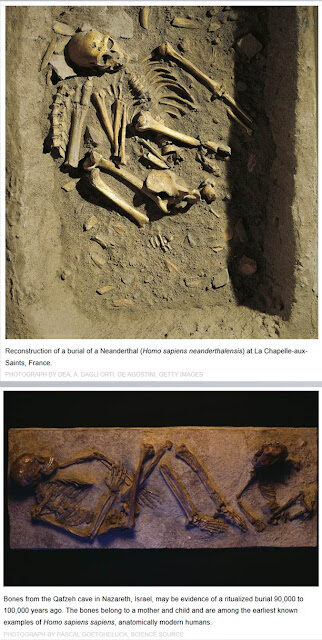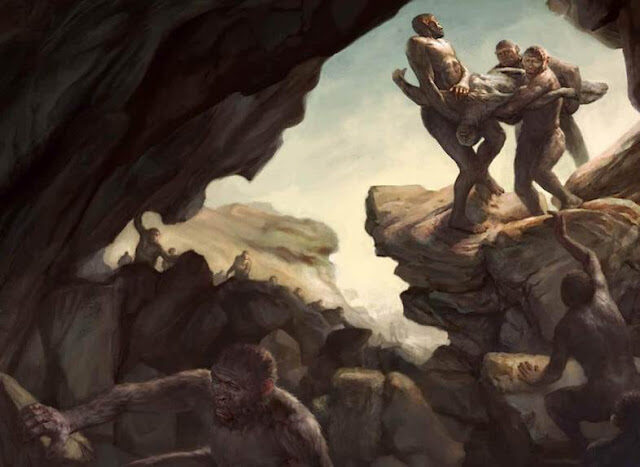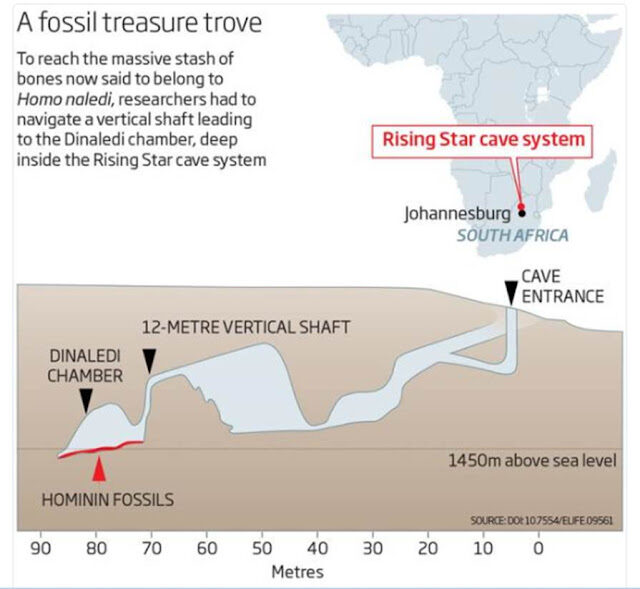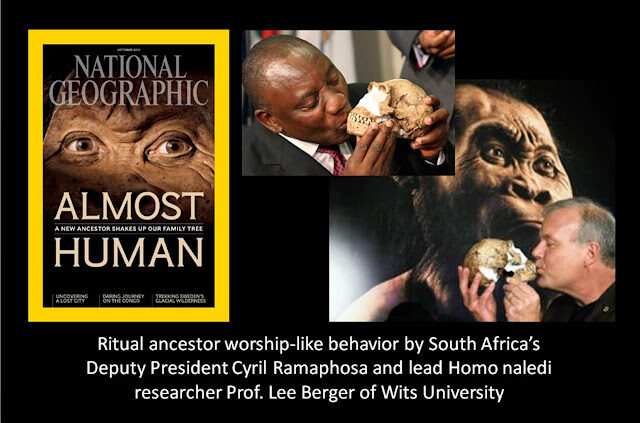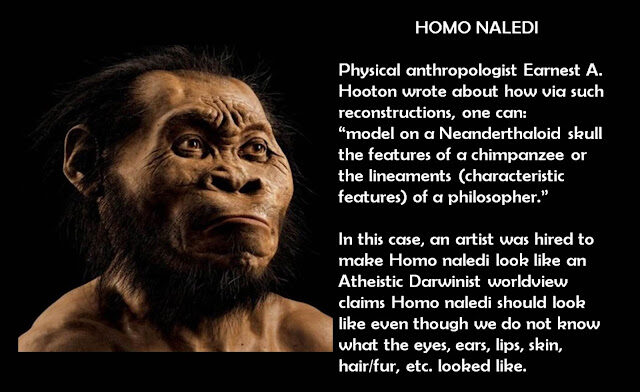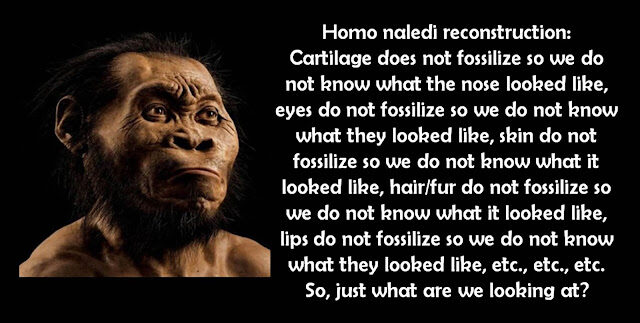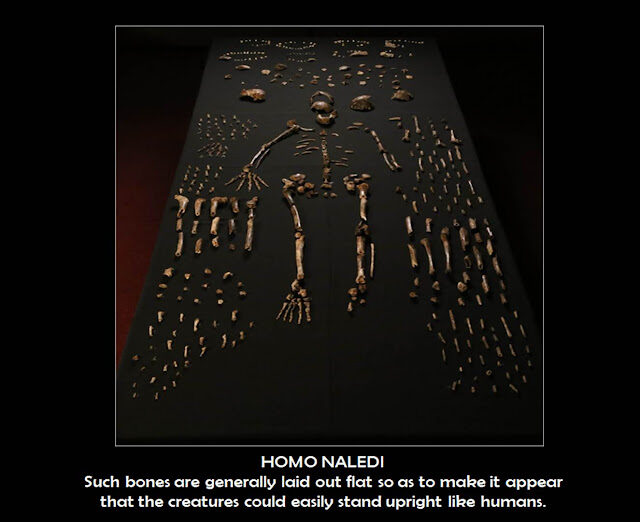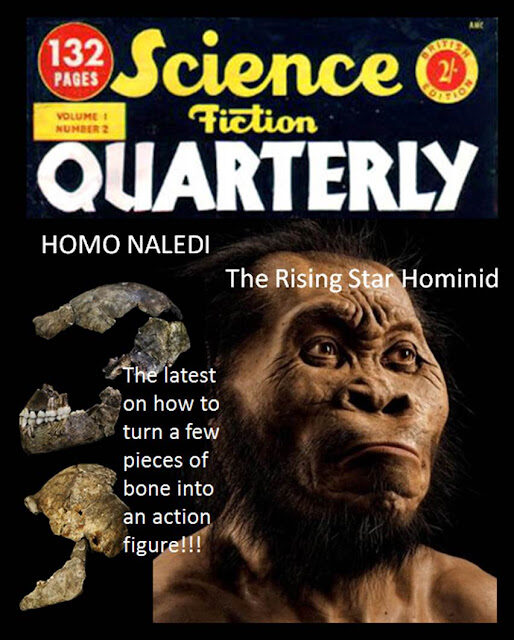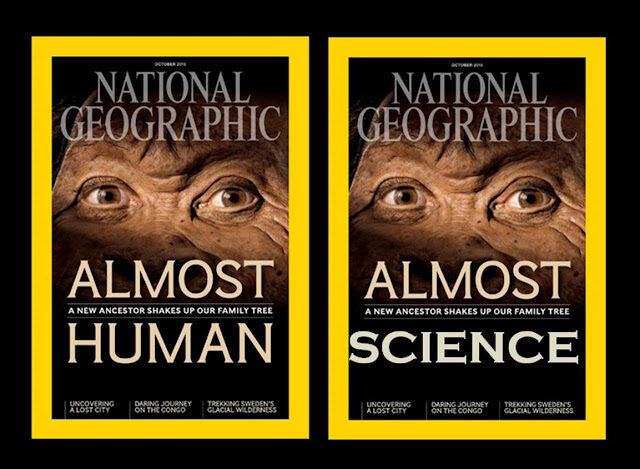Following up on my article Evolution news – human-like species discovered, named Homo naledi, I read Red Journals, article on the issue.
I kept noting the all-encompassing claims that H. naledi represents a “mix of human-like and more primitive characteristics” is “a new member of the human family tree” which “represents a mix of traits” and “arose at or near the root of the Homo group” but “researchers are not claiming that neledi was a direct ancestor of modern-day people, and experts unconnected to the project said they believed it was not.” This way, all bases are covered but generic statements: a little human but not really, part of the human family but only sort of, our direct ancestors but not directly.
Worse yet:
If the bones are about as old as the Homo group, that would argue that naledi is “a snapshot of … the evolutionary experimentation that was going on right around the origin” of Homo, he said. If they are significantly younger, it either shows the naledi retained the primitive body characteristics much longer than any other known creature, or that it re-evolved them, he said.
This is much like the change from “global warming” to “climate change” since “global warming” is a very specific claim and demands very specific evidences yet, “climate change” is generic enough to fit any data.
So now, no matter what the facts turn out to be, it had to do with blind, random, unguided, goal-less Darwinian evolution and that’s for darn toot’n. For “If the bones are about as old as the Homo group” then “that would argue that naledi is ‘a snapshot of … the evolutionary experimentation that was going on right around the origin’ of Homo” but if the exact opposite is true then, “it either shows the naledi retained the primitive body characteristics much longer than any other known creature, or that it re-evolved them” so, like, whatever and stuff.
And if they are something previously chronicled? They’ve got that covered as well by golly:
Not everybody agreed that the discovery revealed a new species. Tim White of the University of California, Berkeley, called that claim questionable. “From what is presented here, (the fossils) belong to a primitive Homo erectus, a species named in the 1800s.”
And what of the dating game? Well, a game it is…a guessing game thus far.
As noted in my previous article Evolution news – human-like species discovered, named Homo naledi, it was reported that they “have not been able to find out how long ago these creatures lived” and this one also affirms “And the discovery presents some key mysteries: How old are the bones?…They said they were unable to determine an age for the fossils because of unusual characteristics of the site, but that they are still trying.” Yet, previously, Prof Lee Berger was quoted to the effect that despite this fact, he “believed” ’cause sure, why not that “they could be among the first of our kind (genus Homo) and could have lived in Africa up to three million years ago.” This time, we get a bit of a more specific date range, based on that which the Prof believes, “naledi’s anatomy suggest that it arose at or near the root of the Homo group, which would make the species some 2.5 million to 2.8 million years old” but with the added twist that “The discovered bones themselves may be younger.”
Eric Delson of Lehman College in New York, who also wasn’t involved with the work, said his guess is that naledi fits within a known group of early Homo creatures from around 2 million year ago.
Old, young, medium…whatever!
Rick Potts, director of the human origins program at the Smithsonian Institution’s Natural History Museum, who was not involved in the discovery, said that without an age, “there’s no way we can judge the evolutionary significance of this find.”
If the director of the human origins program at the Smithsonian Institution’s Natural History Museum thinks that there’s no way we can judge the evolutionary significance of this find he better consult with anonymous prepubescent bloggers who instantly took to their social networking sites to proclaim that, yet again (and again and again) we have a missing link transitional form which re-writes human evolution again (and again and again) and disproves the Bible again (and again and again).
Moreover, the H. naledi reconstruction is a typical worldview based one with white in the eyes, a pensive look, etc. They show the skeletons laid down flat on a table so as to make it appear that they stood upright.
Also, from what I could tell thus far, the skulls are missing the portion that would contain the foramen magnum which would help identify human vs. ape or monkey (humans have this neck hole at the bottom of the skull but apes and monkeys at towards the back.
But we’ve got the pretty pictures so—it must be true!!!
This is the problem with pop-science reports and pop-science (mis)understanding. This is at the very first stage of research and no conclusions should be claimed as of yet.
And in the end, if the past is any guide to the future with particular regard to such things, a few years from now we will be told that these were just monkeys with no fanfare and no retraction from anonymous prepubescent bloggers or academics who, after all, cannot be expected to retract books and take H. naledi from their fancy charts, museum displays, etc.
~~~~~~~~~~~~~~~~~~~~~~~~
A plea: I have to pay for server usage and have made all content on this website free and always will. I support my family on one income and do research, writing, videos, etc. as a hobby. If you can even spare $1.00 as a donation, please do so: it may not seem like much but if each person reading this would do so, even every now and then, it would add up and really, really help out. Here is my donate/paypal page.
Due to robo-spaming, I had to close the comment sections. However, you can comment on my Twitter
page, on my Facebook page, on my Google+ page and/or the “Share/Save” button below the tags.

